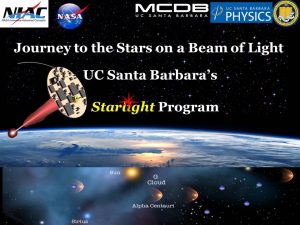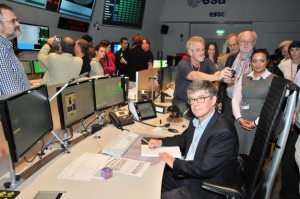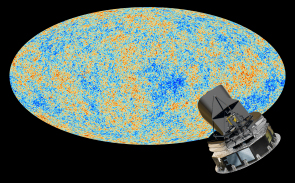- Home
- Classes
- Physics 134 – Observational Astrophysics – Fall 2022
- Physics 6B – Spring 2015
- Physics 134 – Observational Astrophysics – Fall 2020
- Symmetry & Aesthetics in Contemporary Physics
- Physics 128 – Senior Lab – Fall 2016
- INT 184 – PL Interdisciplinary Honors Seminar – Weapons of Mass Destruction – Spring 2013
- Physics 150 – Modern Design and Fab – Fall 2019
- Physics 134 – Observational Astrophysics – Fall 2019
- Physics 2 – Fall 2013
- Physics 3 – Fall 2016
- Physics 4 – Winter 2020
- Astro 1 – Fall 2020
- Physics 4 – Winter 2023
- Physics 141 – Optics – Spring 2019
- Physics 145L – Astrophysics Research
- Physics 199 – Independent Research
- Projects
- Facilities
- People
- Net
- Outreach
- Misc
- Papers
Dr. Jatila van der Veen
Project Scientist I, Interstellar Bio data, research, and recent publications can be found on http://web.physics.ucsb.edu/~jatila.
Homepage: http://web.physics.ucsb.edu/~jatila
Posts by Dr. Jatila van der Veen

Raw Science Film Festival Jan 2018
Dec 26th
The Raw Science Film Festival is coming to Santa Barbara January 6th at the Lobero Theater ! Members of our lab will be featured
Exhibitors and two of our PIs, Professors Philip Lubin and Joel Rothman, are featured Speakers !

Congress directs NASA to go Interstellar by 2069 – May 2016
May 30th
May 2016
“Although such approaches may seem impossibly sci-fi for many space scientists, the report also refers to ‘beam energy approaches.’ The report mentions that the NASA Innovative Advanced Concepts (NIAC) program is already funding a study of “directed energy propulsion for wafer-sized spacecraft that in principle could achieve velocities exceeding 0.1c.”
(UCSB NASA Program – now called Starlight – emphasis added)
page 60, Excerpt from the 114TH CONGRESS REPORT of the HOUSE OF REPRESENTATIVES, 2d Session
“The Committee encourages NASA to study and develop propulsion concepts that could enable an interstellar scientific probe with the capability of achieving a cruise velocity of 0.1c. These efforts shall be centered on enabling such a mission to Alpha Centauri, which can be launched by the one-hundredth anniversary, 2069, of the Apollo 11 moon landing.”
“…within one year of enactment of this Act, NASA shall submit an interstellar propulsion technology assessment report with a draft conceptual roadmap, which may include an overview of potential advance propulsion concepts for such an interstellar mission, including technical challenges, technology readiness level assessments, risks, and potential near-term milestones and funding requirements.”
Planck and the Higgs Boson
Oct 23rd
While at CERN in Geneva, particle physicists searched for and found the Higgs Boson, the field that gives mass to all other particles, Planck has been mapping the Cosmic Microwave Backround, the oldest light of the universe. This video, produced by the European Space Agency, shows the connections between the two. Planck scientists featured in this video are Chief Scientist, Dr. Jan Tauber, Dr. Francois Bouchet, and Dr. Benjamin Wandelt.

End of Planck Satellite – Oct. 23, 2013
Oct 23rd
After successfully mapping the Cosmic Microwave Background radiation for 4.5 years, the Planck Satellite was turned off at approximately noon, UTC, on Wednesday, October 23, 2013. For details, see Last Command Sent to ESA’s Planck Space Telescope .
We are sad to see the end of this project, but we will be working on the data for at least another year before they are released to the public domain.
See additional links and information:
Planck sees distribution of dark matter across space and back in time

